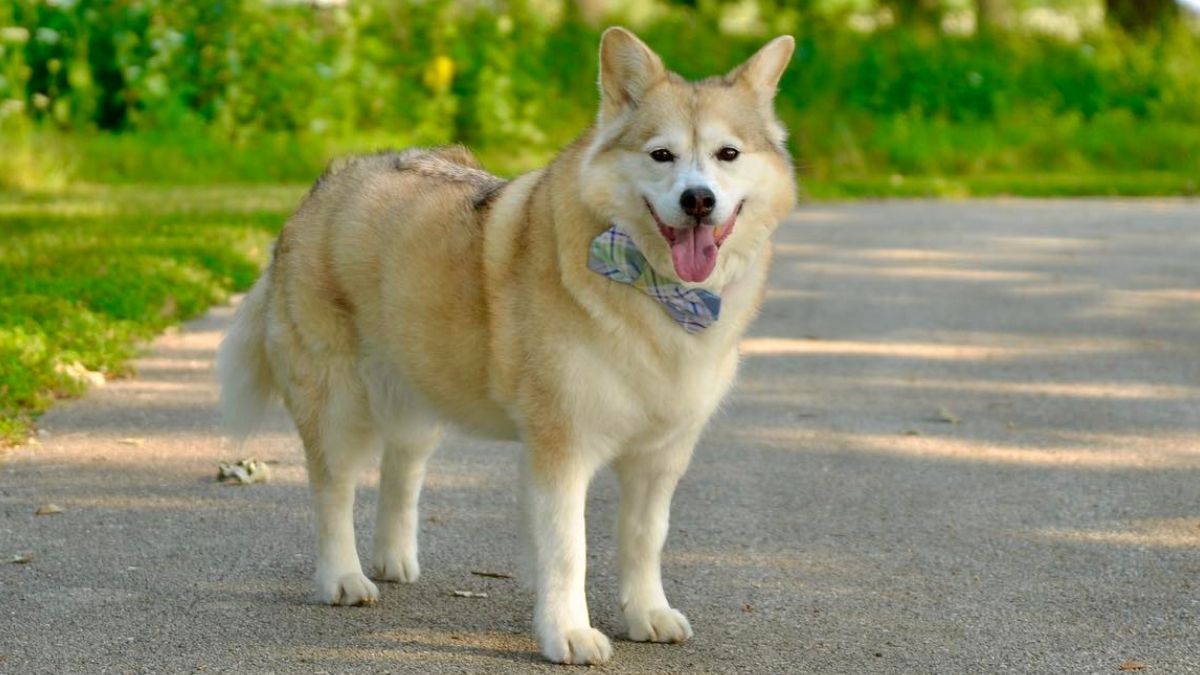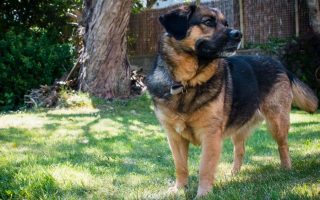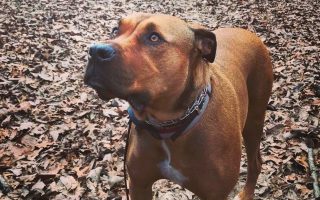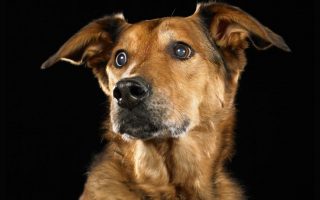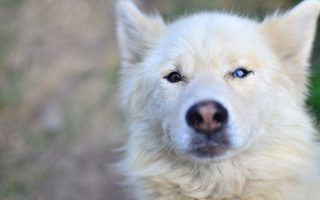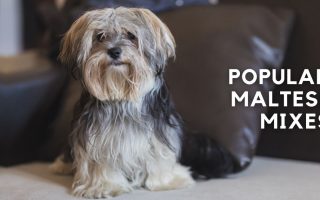The Corgi Husky Mix is also called Horgi, Siborgi, or Corgsky, and it is a cross between the Siberian Husky and the Pembroke Welsh Corgi.
This smart and fluffy designer breed has gotten a bit of popularity, and with that popularity, many have been driven to get the breed.
Though they had different roles, the Siberian Husky and Corgis are known to be active breeds. That hasn’t gone off today.
So, we should expect the same from Horgi. As a potential pet parent, if you do not acknowledge the active level and other traits of this designer breed, you might be in for a rough ride.
This guide will provide detailed information about the Corgsky (with pictures) and all you need to understand and care for this breed.
Corgi Husky Mix Facts & Breed Overview
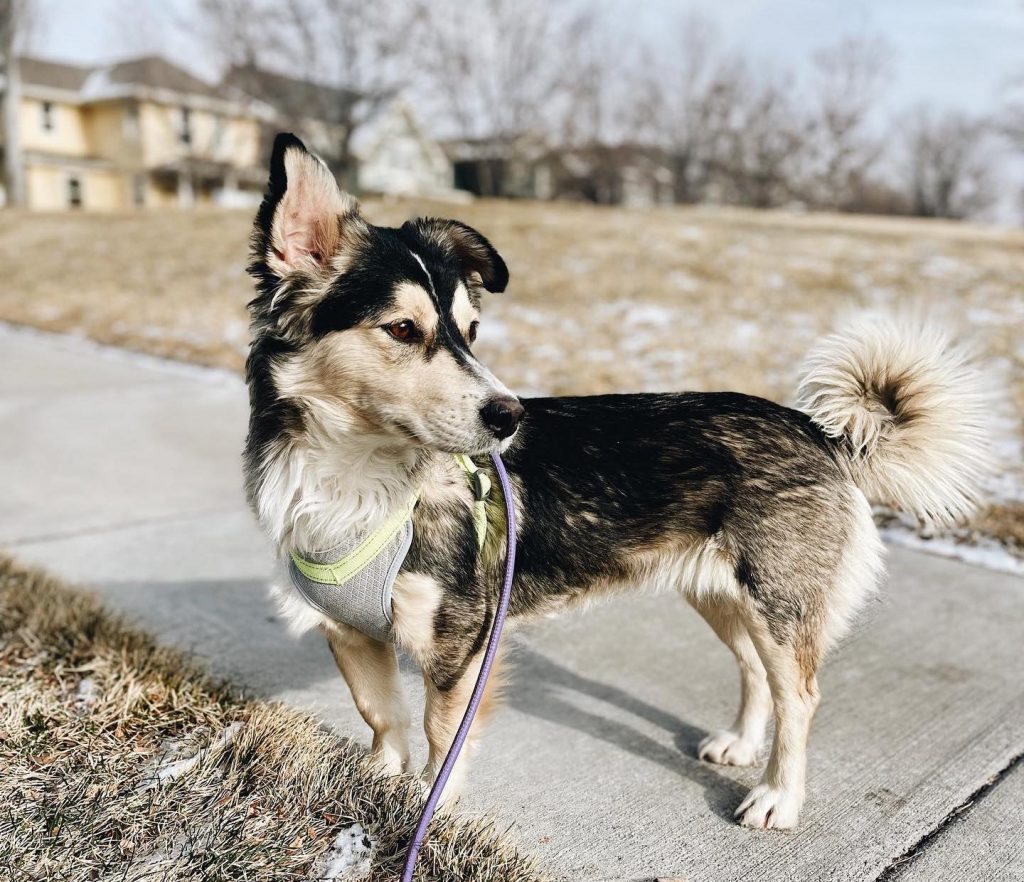
| Height | 12 to 15 inches |
| Weight | 20 to 50 pounds |
| Lifespan | 12 to 15 years |
| Breed Type | Mixed breed |
| Coat Type | Double, long, thick, dense, straight, medium |
| Coat Color | Black, cream, red, sable |
| Ideal for | Active people, experienced owners |
| Temperament | Loyal, sweet, intelligent |
| Health | Medium (Health Issues: Hip dysplasia, degenerative myelopathy, back problems) |
| Friendliness | High |
| Grooming | Medium |
| Energy | High |
| Trainability | High |
| Corgsky Puppy Price | $300 to $1,000 |
The Parent Breeds
Pembroke Welsh Corgi
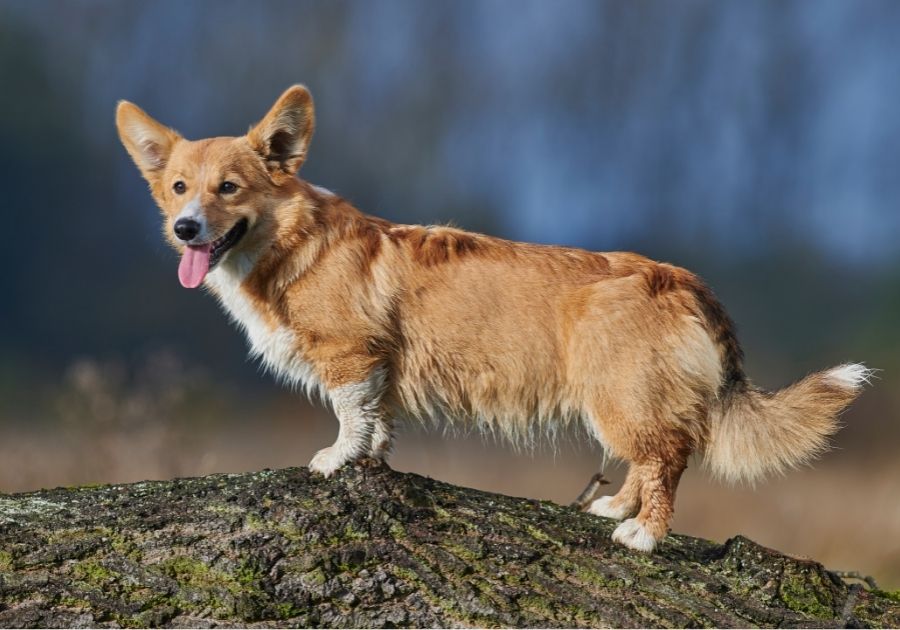
- Height: 10 to 12 inches
- Weight: 28 to 30 pounds
- Lifespan: 12 to 13 years
- Breed Type: Purebred (Herding Group)
- Coat Type: Double, thick
- Coat Color: Red, sable, black
- Temperament: Playful, tenacious, friendly, outgoing
- Ideal For: Active pet parents, families with kids
- Health Issues: Hip dysplasia, epilepsy, cutaneous asthenia, cystinuria, intervertebral disc disease
Before talking about the Pembroke Welsh Corgi, we need to point out that there are two Corgi breeds, the Pembroke Welsh Corgi and the Cardigan Welsh Corgi.
Both of them can be crossed with the Husky to develop the Corgsky, but for the sake of this article, we will focus more on the Pembroke Welsh Corgi.
When this breed first came about in Wales, the Pembroke and Cardigan were both recognized as one breed.
No one is quite sure of the ancestry of the Welsh Corgi, given that it has existed for a long time. However, there are two theories.
The first states that the Welsh Corgi’s ancestor was the Vallhund, a Swedish breed that came into Wales thanks to Vikings in the 9th and 10th centuries.
The second theory states that the Welsh Corgi descended from the Flemish weavers in the 12th century.
There’s also folklore that calls the Welsh Corgi a gift from fairies.
The Welsh Corgi remained a single breed till the early 1930s when both the Kennel Club and the American Kennel Club distinguished both the Pembroke Welsh Corgi and the Cardigan Welsh Corgi.
The Pembroke and Cardigan Corgis are very similar, except for the tail. The Pembroke has a docked tail.
The Pembroke is the smallest recognized dog in AKC’s Herding Group. It weighs up to 30 pounds and has a height that gets to 12 inches.
The Pembroke’s coat is double, thick, and long.
Expect to get a happy, loving, and eager-to-please breed when you get a Pembroke Welsh Corgi.
This breed loves its family and enjoys being around them. But its active level can make it unfit for some people. It tends to be stubborn too.
Siberian Husky
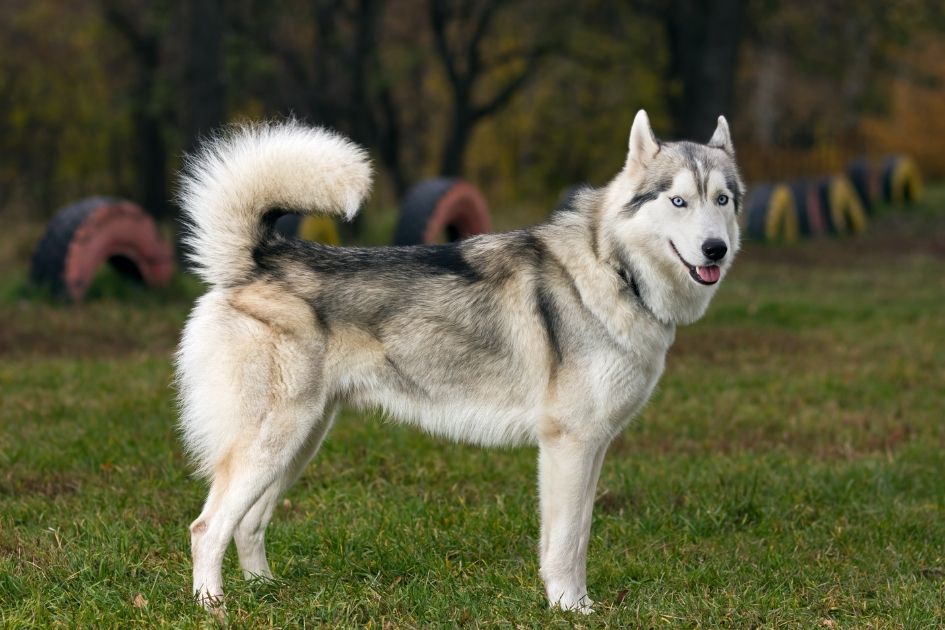
- Height: 20 to 23 inches
- Weight: 35 to 60 pounds
- Lifespan: 12 to 15 years
- Breed Type: Purebred (Working Group)
- Coat Type: Double, straight, dense
- Coat Color: Black, white
- Temperament: Outgoing, Friendly, Intelligent
- Ideal For: Active, experienced
- Health Issues: Cataract, Corneal Dystrophy, Progressive Retinal Atrophy
The Siberian Husky is one of the oldest dog breeds in the world, and it originated in Siberia among the Chukchi Tribe.
It was employed as a sled dog for the Chukchi nomads, and it also played the role of a companion after a day’s job. Added to that, Huskies also helped keep the family warm during snowy nights.
For the moment, they didn’t look like what we know today.
The first Huskies got into the United States in 1908 during the gold rush period in Alaska. They also participated in sled dog competitions.
It was in America that the Siberian Husky took on the exact look that it currently has. The American Kennel Club recognized it in 1930.
The Siberian Husky is a medium-sized dog with a weight that gets up to 60 pounds and a height usually not more than 23 inches.
It has the looks of a wolf, but thankfully not the personality traits. Huskies are slender, athletic, and fiery. It has a double, medium coat that’s both soft and dense.
They are lovers of people. The Siberian Husky enjoys being around everyone, both families and strangers. It doesn’t make a good guard dog for this reason.
Do bear in mind that its working status means it is highly energetic and will get bored if left idle. Give it a lot of exercise if you intend to keep it as a pet.
This breed can also be challenging to train, making it a better option for experienced owners.
Overview of the Corgi Husky Mix
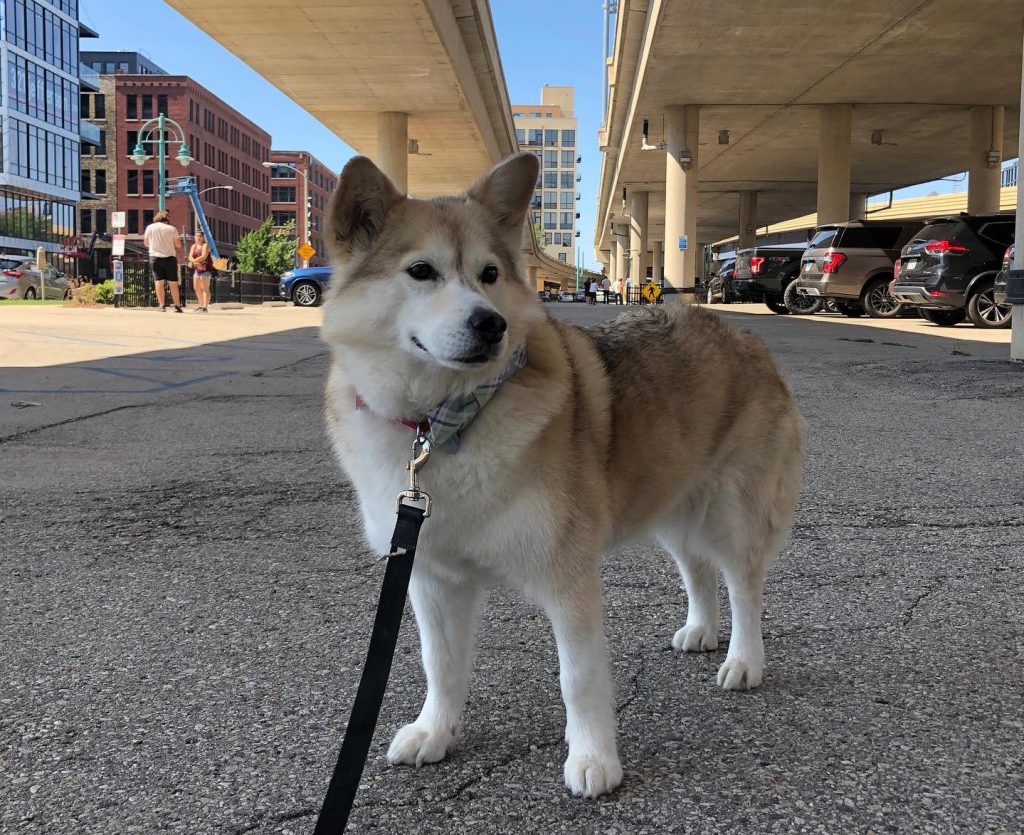
The Corgi Husky mix came about from a cross between the two phenomenal breeds we mentioned above.
An offspring of a herder dog and a sled dog will have an interesting combination of physical and personality traits, as well as peculiar needs.
It can be hard to know what to expect from a mixed breed due to the lack of written down standards, but research on the behaviors of the members can help us better understand.
This same rule applies to Siborgi.
Origin of the Corgi Mixed with Husky
Corgi Husky mixes might have existed for some time, but intentional crossbreeding of this mix began in the 1990s. It is believed that intentional breeding began in America.
The first aim of breeders was to create a miniature Husky that would serve as a herding group.
However, the breed quickly became a favorite family companion, and it was suitable for those who might want a Siberian Husky but do not have what it needs. Demands for this breed increased, and with it, the number too.
The Horgi is growing in popularity but hasn’t been recognized by the American Kennel Club because of its breed status.
Facts About the Corgi and Husky Mix
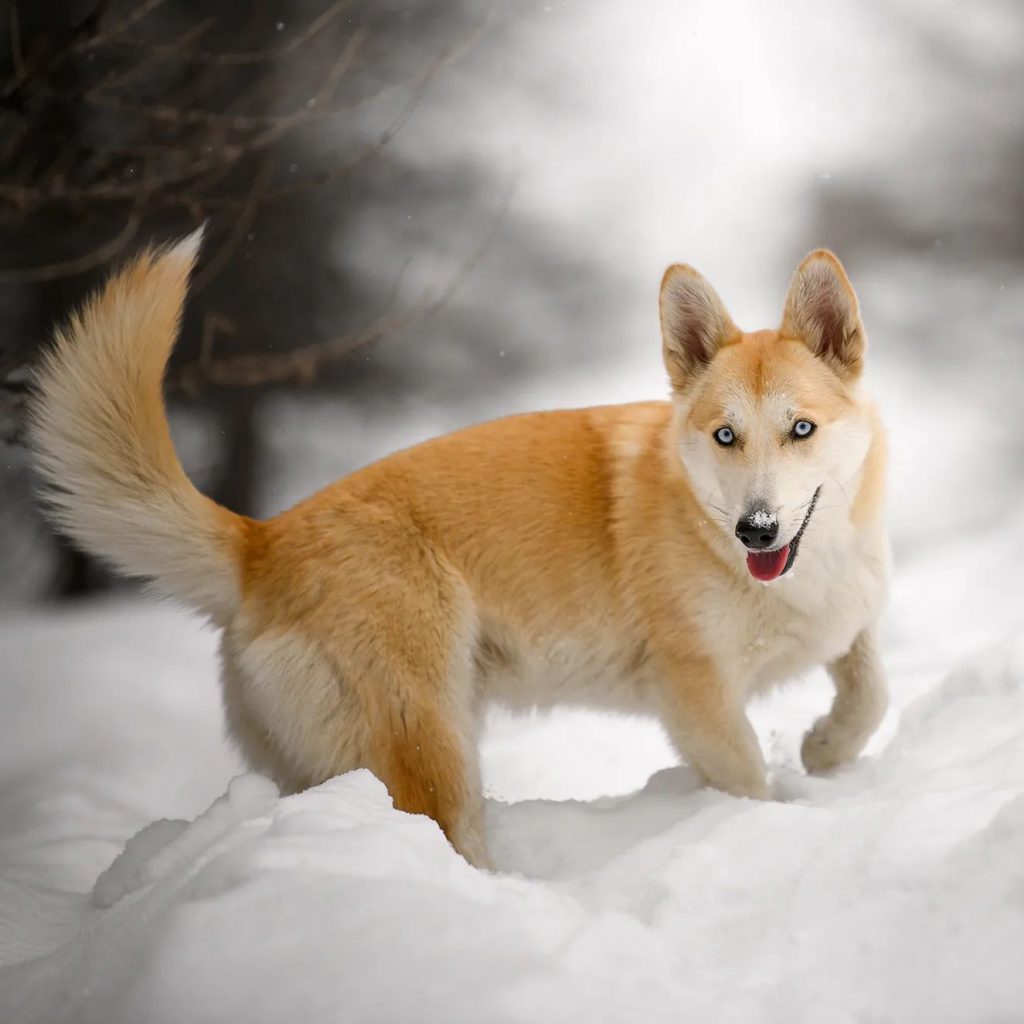
- The Corgi Husky mix is a relatively new breed, as intentional breeding only began in the 1990s.
- This breed is a heavy shedder and isn’t suitable for those with allergies. It needs some amount of grooming effort.
- It is difficult to know how big your Horgi puppy will grow. Both parents have different sizes, making it harder to figure out what parent size the Horgi will lean towards.
- The Siborgi isn’t suitable for new pet parents. Following the footsteps of the Husky and the Pembroke, this mix can be stubborn and independent. It is trainable, but only by an experienced owner.
- Horgis are good for families with kids but should be trained not to nip at their heels.
Husky Corgi Mix Appearance
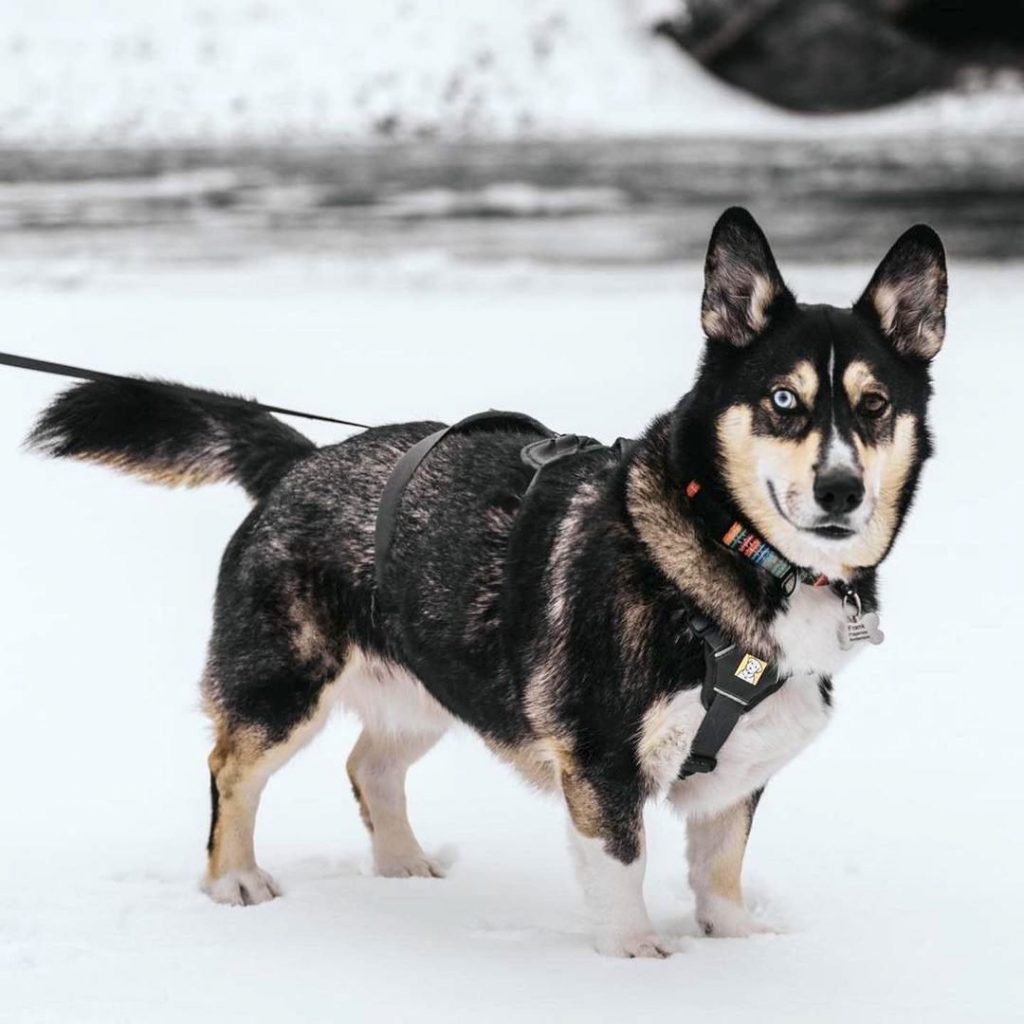
Mixed breeds are a gamble, and the Corgsky can appear in different ways. The dominant gene often determines which parent the Horgi will take more of.
With no fixed standard, it can be hard to give any requirement. However, there can always be guidelines.
Usually, the Horgi’s size falls between the Siberian Husky and the Welsh Corgi. Recall that this was what breeders wanted when they set out to develop this dix intentionally.
The Horgi weighs between 20 and 50 pounds and grows as tall as 12 inches.
This mix appears to look like a fox with its pointy ears and mischievous expression. The skull is wide and looks flat, with brown or blue eyes, a broad chest, and an athletic body.
Its coat is always double, but the length and texture depend a lot on the dominant pet parent.
Temperament of the Husky Corgi Mix
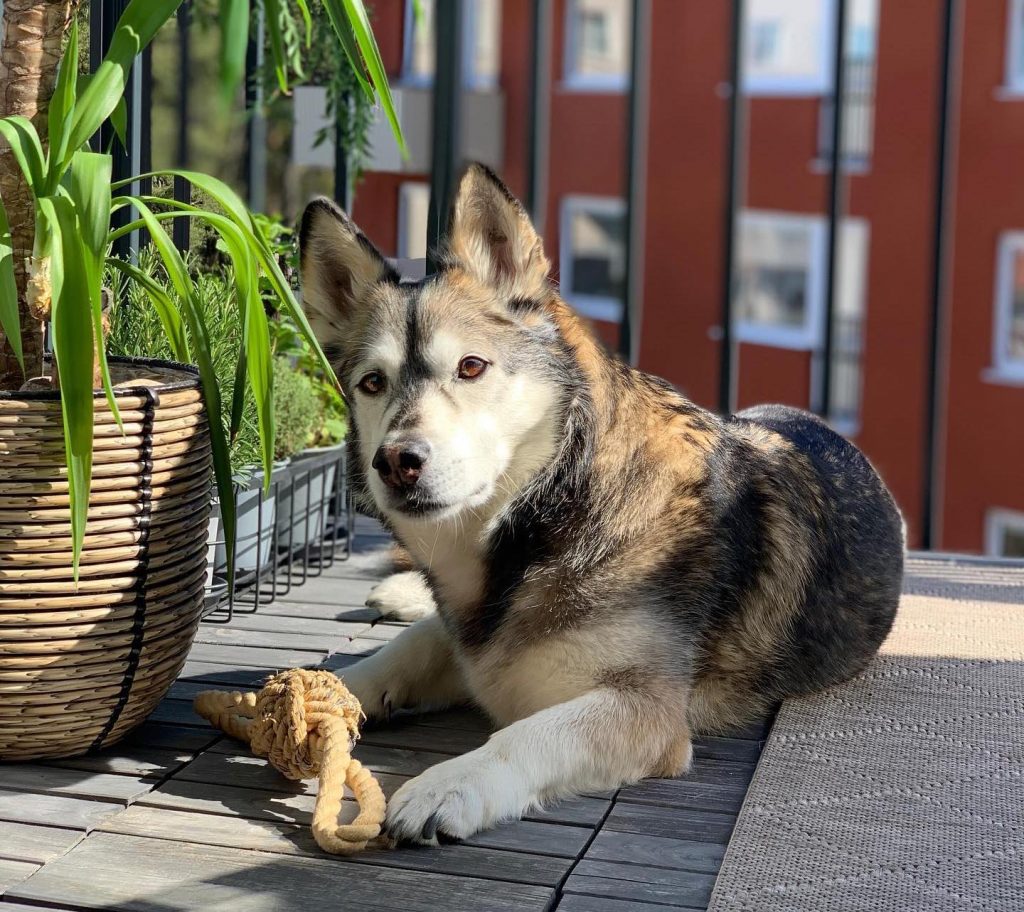
The Husky and Corgi mix often has the size of a lapdog, but this breed isn’t likely to spend all day cooped up on your laps.
It would rather be outside, but that doesn’t mean it enjoys being alone. On the contrary, this breed enjoys being with its family, just not in an idle manner.
Husky Corgi mixed dogs will also be willing to accommodate strangers, but some might show signs of aloofness if they pick that from the Corgi. They don’t tend to be territorial, however.
Another good trait of the Siborgi is its loyalty. Though it isn’t a good guard dog because of its friendliness towards people, it remains devoted to its owners.
This mix might alert you to a stranger, but that’s the only protection it can do.
The pleasing nature of this breed is an asset during training and bonding moments, but the Corgsky is also stubborn and sometimes mischievous.
Is the Husky Corgi mix good with Kids?
The Husky Corgi is perfect for a family with kids as it enjoys being around them. Children are active and love to play, making them a good fit for the Horgi.
That said, the Horgi can develop the habit of nipping at your kids’ heels to get them in line. It is normal behavior, but you can train it to desist from it.
Supervise any interaction your kid has with the Corgsky, especially when the child is a toddler.
Accidents can happen if you’re not around. Also, teach your kids to handle a dog well.
Is the Husky Corgi good with other dogs and pets?
The Siberian Husky is a pack dog, so the Horgi can get that trait. This would make it good for a house with multiple dogs as it will get along with them.
Socialize this Mix from a young age to be safe, but it shouldn’t have any problem with dogs.
Its interaction with other pets is where the struggle might be. The Horgi might get the Siberian Husky’s prey drive and pose a threat to rodents and cats.
If you want to have this Mix in a house with pets, introduce it to those pets at a young age and supervise them.
Corgi Husky Mix Puppy
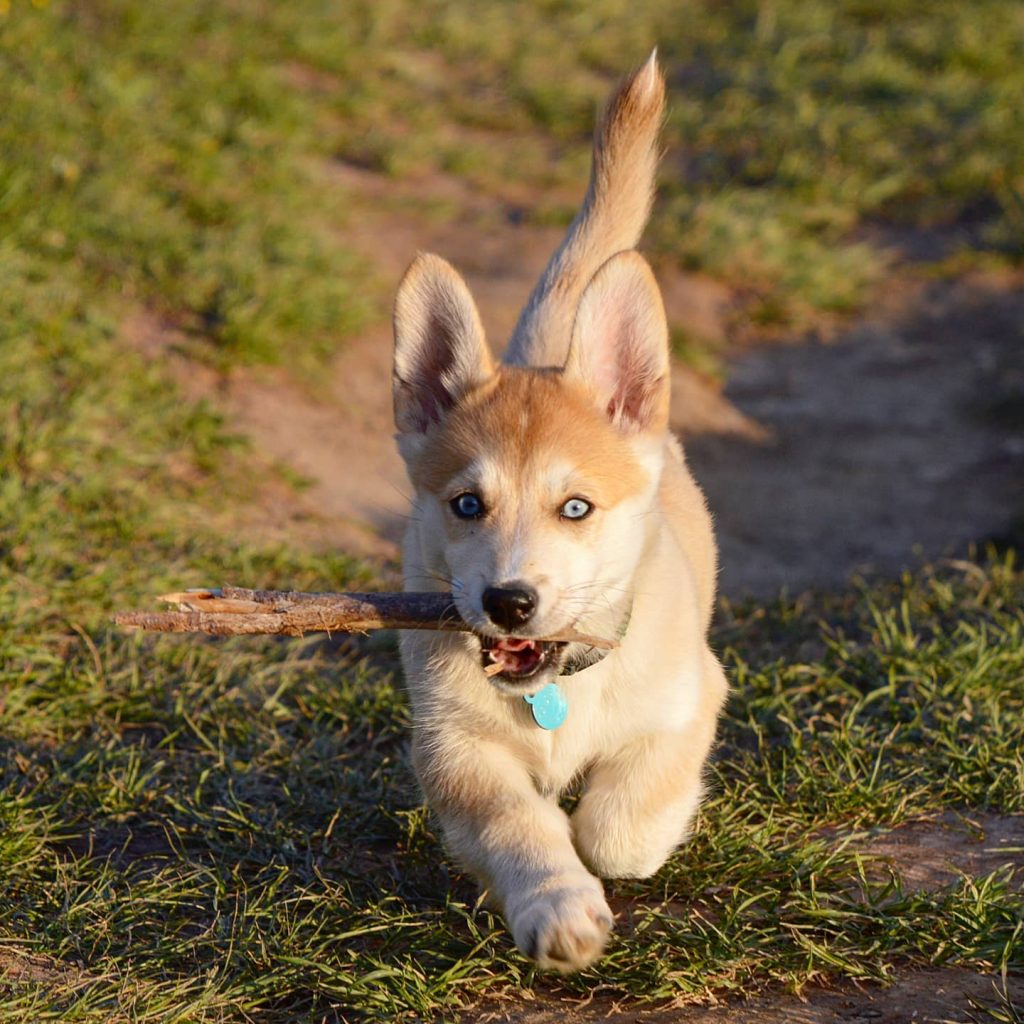
Corgi Husky mix puppies often have the same size when still little, but as they grow, the differences emerge.
Those with a Husky-dominated gene will look bigger than those who aren’t.
Looks will vary from the onset, but there can also be some changes that will not occur till the pup matures.
For example, you might not know how long the coat is until your pup gets into adulthood.
With the Horgi, expect any changes and make provisions for it. When you have that mindset, it wouldn’t matter whose genes your pup favored. It will make a good family dog.
Food & Diet for a Corgi and Husky Mix
Because the size of this breed isn’t definite, you should consult a veterinarian to determine how best you go about feeding it.
As the pup transitions into an adult, the veterinarian can guide you into making any necessary changes. This would also help you not overfeed your dog or unintentionally starve it.
The Siberian Husky mixed with Corgi is highly food motivated and loves to eat, though some might be picky like the Husky parent.
Either way, obesity can become a problem, further posing some complications.
Have a scheduled time to feed your dog, and do not let it eat whenever it wants. Once you have arranged an ideal amount with your veterinarian, stick to it.
Just like food, the Siborgi also like treats. As we’ll soon see, treats are good motivators during training. It can also be used to spice up their mealtime.
With that in mind, regulate the treats you give them according to the calories. Do not give them too many treats as that can also make them add weight and lead to other complications.
Husky and Corgi Mix Exercise
Horgi requires at least 60 minutes a day. This highly active breed should not be left without exercise.
Not only is that bad for its health, but it can also make it get restless. Both physical and mental activities are important for this mix.
They love to play around, so you can schedule some minutes of yard play if you’re not willing to go outside. Its exercise shouldn’t be limited to yard play, though.
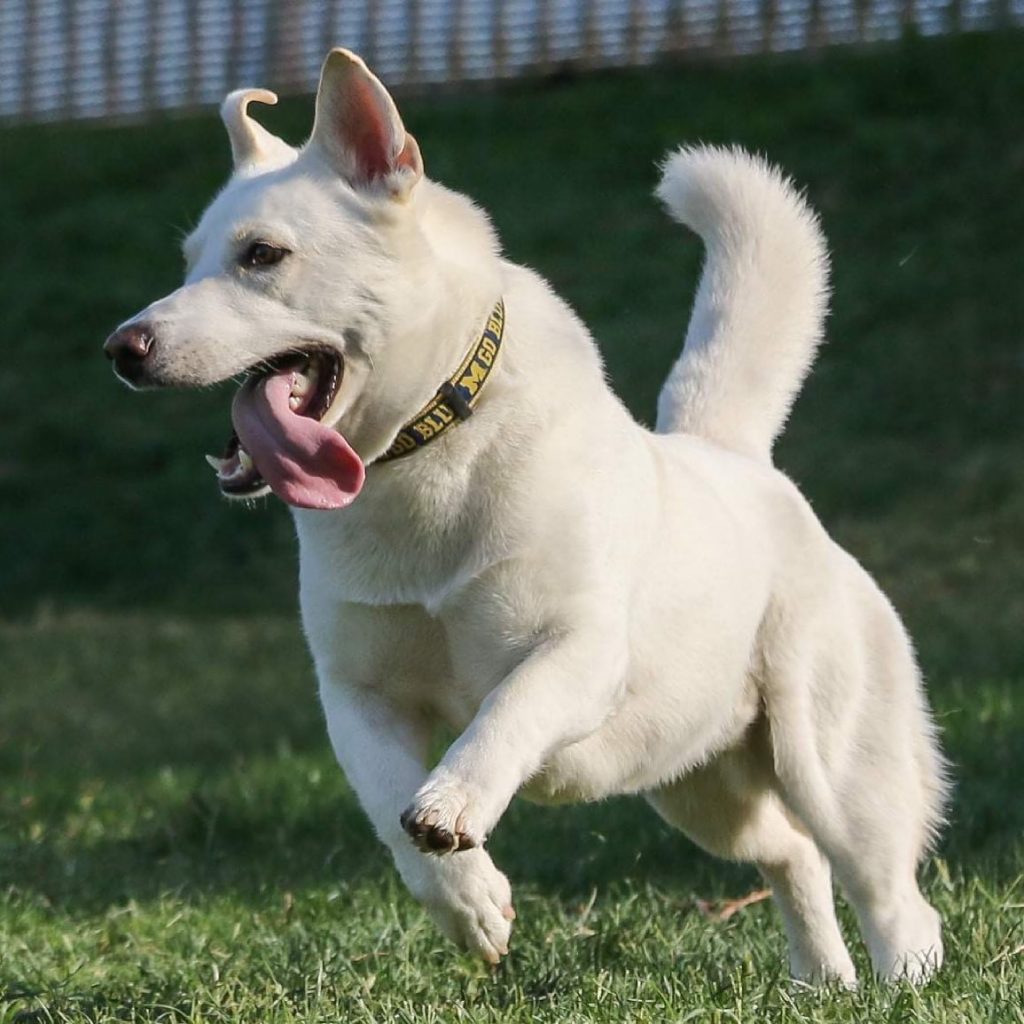
Horgis love to run and jog, so those activities should not be left out. A couple of walks a day can do wonders too.
While outside, you can keep your pooch on a leash or without. It depends on how trained your Horgi is, and if it won’t dash off once you free it off the leash.
The Horgi loves to learn, is willing to please, and is considered intelligent.
However, the reason it is unsuitable for a new pet parent is because of the occasional stubbornness, mischief, and energy.
It can be hard to get the Corgsky to concentrate when it would rather play, and you can’t afford to get frustrated, or it will interpret that frustration in another manner.
While training, you should be patient, loving, and firm. One way to get your dog interested in the training is with treats.
Because the Horgi is food motivated, treats are the best positive reinforcement for them.
Praises and encouragements help also because the Horgi will pick up on your excitement and get excited too.
All forms of training are necessary for this mix, from obedience training to socialization. Teach your dog basic commands that you can use to keep it in line, like Sit, Stay and Drop It.
Take it to new places and let it meet new people. You can also enroll it in a puppy class.
Corgi Husky Mix Lifespan and Health Problems
Mixed breeds tend to be healthier than pure ones, so it isn’t surprising that the Horgi has a long life span.
The Husky Corgi mix is expected to live up to 15 years, though with enough care, they can live longer than that.
To help your Horgi live longer, you should understand what illnesses your dog can be prone to.
Keeping them in mind can help you ask better questions when you want to buy or adopt this mix and what to do if your pooch displays the symptoms.
Some health conditions the Siborgi can be prone to include:
Hip dysplasia
Hip dysplasia is common amongst medium and large dog breeds, but it can happen among dogs of any size.
It occurs when the hip joint loosens due to an abnormal formation, and it affects the mobility of the dog.
Some symptoms of hip dysplasia include limping, showing visible signs of pain (like whining), a refusal to exercise, and sometimes even to move.
Hip dysplasia can be genetic or caused by other factors like poor diet.
Degenerative Myelopathy
This affects the dog’s spinal cord and is caused by a degeneration that occurs on the spinal level.
No one is quite sure what causes it, and it manifests a lot as arthritis does. This can sometimes pose difficulties in diagnosis.
Symptoms of degenerative myelopathy include weakness, wobbling movements, spinal injuries, and spinal tumors.
Back problems
Back problems aren’t just a human thing; they can affect animals too. Dogs can experience back pain which might be either mild or severe, depending on the situation.
It can be caused by different issues ranging from injuries to old age. Arthritis and some inflammatory conditions can also cause back pain.
Symptoms include loss of appetite, visible display of pain, lessened mobility, weakness, sudden aggression (especially when touched at the back), and signs of injury.
Grooming a Corgi and Husky Mix
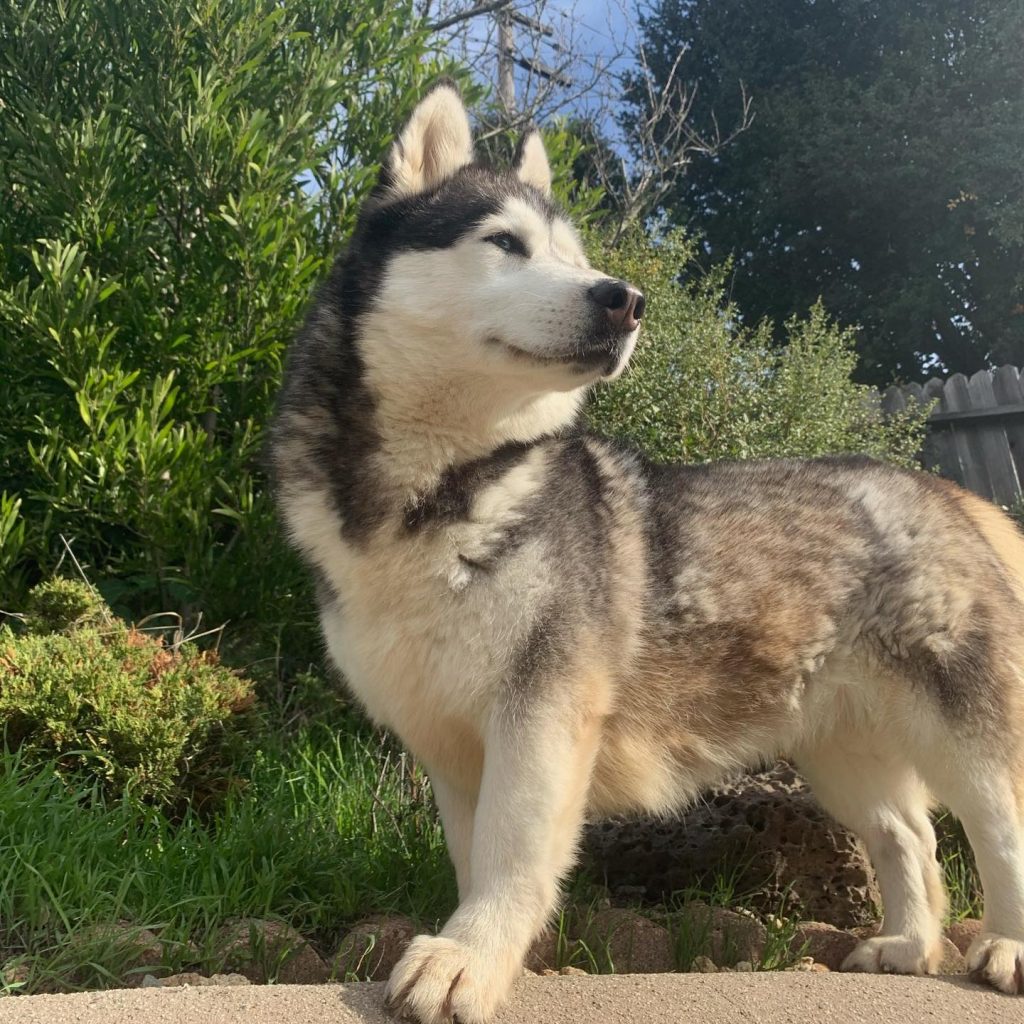
Whatever coat type your Horgi picks, the grooming need of both parents are relatively the same.
For starters, the Corgsky sheds just as much as its parents. You’ll need a good vacuum cleaner, possibly a robot vacuum for pet hair.
During those shedding moments, your dog should also be brushed daily.
Huskies are self-cleaning dogs, though the Welsh Corgi isn’t. The Horgi might get the self-cleaning habits from its Siberian Husky parent.
But even if it doesn’t, bathing should be kept at a minimum. Get a good shampoo appropriate for their skin.
Trim your dog’s nails as it would get uncomfortable moving around with long nails. Trimming should be done with care to avoid injuring the dog. Better still, hire the services of a groomer.
You should equally brush your Corgsky’s teeth regularly and clean its ears.
Living with a Husky and Corgi Mix
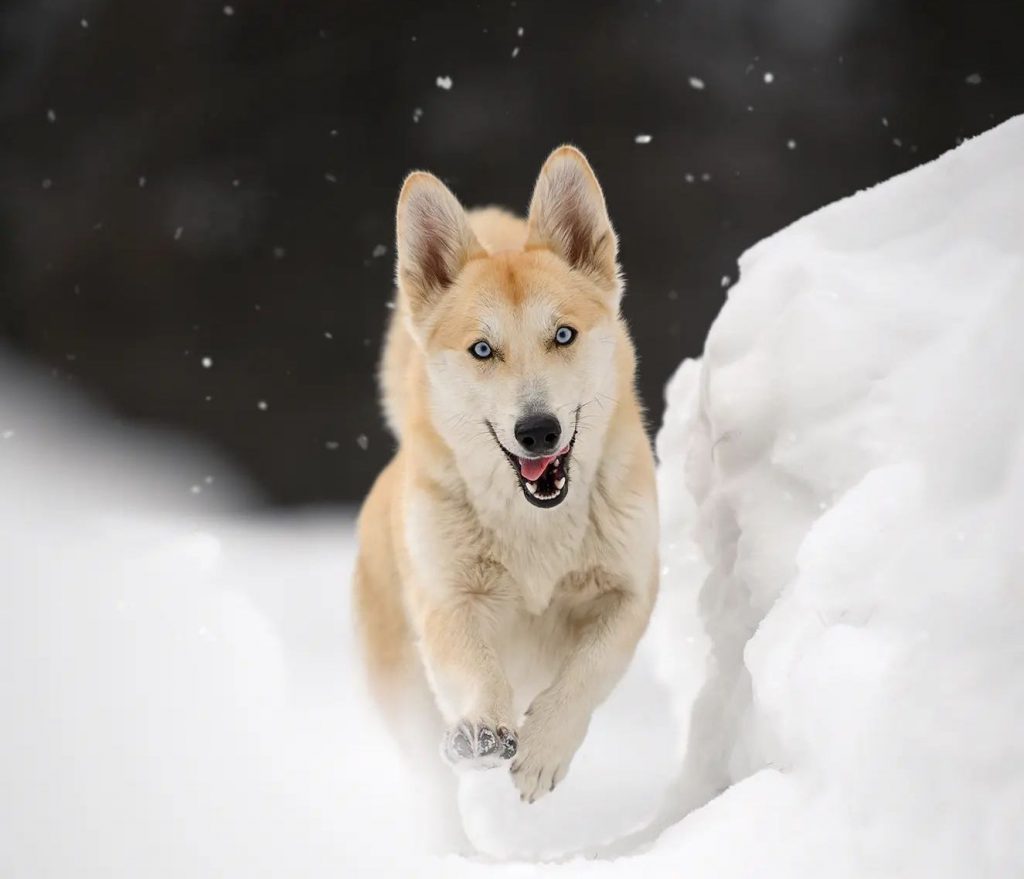
The Husky Corgi isn’t suitable for an apartment because of its energetic level. It needs an environment with space, though it shouldn’t be left outdoors and alone for long.
This Mix would want to be around you, even when it feels like playing. Leaving it alone can be troubling for it.
If you’re too busy and you live alone, make arrangements for a pet sitter while you’re away.
Exercise is a must if you want to live in peace and harmony with the Horgi. You should also set boundaries for it to know where it can go and where it shouldn’t be found.
Not only would building boundaries help your dog to be well mannered, but it will also assert your position as leader of the pack.
How Much is a Corgi Husky Mix?
The Corgi Husky mix puppy is not as expensive as its parent breeds. The Siberian husky costs between $1,500 and $3,000, largely because of its popularity. The Welsh Corgi comes at a cheaper price with a range that’s between $700 and $2,000.
The Corgi Husky mix price range is from $300 to $800, though some can get to $1,000 depending on the breeder.
Ultimately, ensure that the pup you want to pay for was well-bred, and the only way to know this is by getting a reputable breeder.
Though they are not purebred, you can find some Horgis at rescue shelters. That’s another available option, and with the ever-going trend of “adopt, don’t shop,” it is a viable option.
You should also know what you’re getting into before adopting one, so ask a lot of questions.
Is a Corgi Husky Mix Right For Me?
The Horgi can be either a blessing or a curse, depending on how well it fits into your household.
We will highlight some benefits and downsides of the Horgi; and if you haven’t yet figured out if the Corgi and Husky mix is good for you, this should help.
Corgsky Pros
- Active and good for people who love exercise.
- Good family dogs, kid-friendly, and flows with other dogs.
- Loyal and affectionate.
- Intelligent, eager to learn, and willing to please.
Corgsky Cons
- Laid-back owners will not appreciate this breed.
- Not suitable for an apartment.
- A poor choice for first-time dog owners.
- Not hypoallergenic.
Frequently Asked Questions (FAQs)
What is a Husky Corgi mix called?
The Husky mixed with Corgi goes by the names Horgi, Siborgi, and Corgsky, which is a combination of both parent breeds’ names.
Do Husky Corgis shed much?
The Husky Corgi mix is a high shedder, and don’t be surprised when your living room gets filled up with hair. This is a strong factor to consider when getting this mix.
Can a Husky mate with a Corgi?
The Siberian Husky and Welsh Corgi has been crossed, not just accidentally, but on purpose. Breeders wanted to get a mini Husky that could be a herder.
The friendly and loving Husky Corgi mix was a result—they are smart, good for families, and they get along well with kids and other pets.
Final Thoughts
The Corgi Husky mix is a super smart and fluffy hybrid—thanks to the parent breeds.
The Horgi is a good family dog for some people, and hopefully, you have figured out if you are one of those.
It takes a lot of commitment and effort to own and care for this mix, so you should be confident that you can before you decide to introduce a Corgsky to your household.
Check out other Husky mixes:
References & Notes
- Wikipedia, “Siberian Husky,” https://en.wikipedia.org/wiki/Husky
- AKC, “Pembroke Welsh Corgi,” https://www.akc.org/dog-breeds/pembroke-welsh-corgi/
- Kanae OYAKE, Yui KOBATAKE, et al. “Changes in respiratory function in Pembroke Welsh Corgi dogs with degenerative myelopathy.” J Vet Med Sci., vol. 78, no. 8, pp. 1323–1327. doi: 10.1292/jvms.15-0521, https://www.ncbi.nlm.nih.gov/pmc/articles/PMC5053935/
Featured Image: @livinglikewilma

